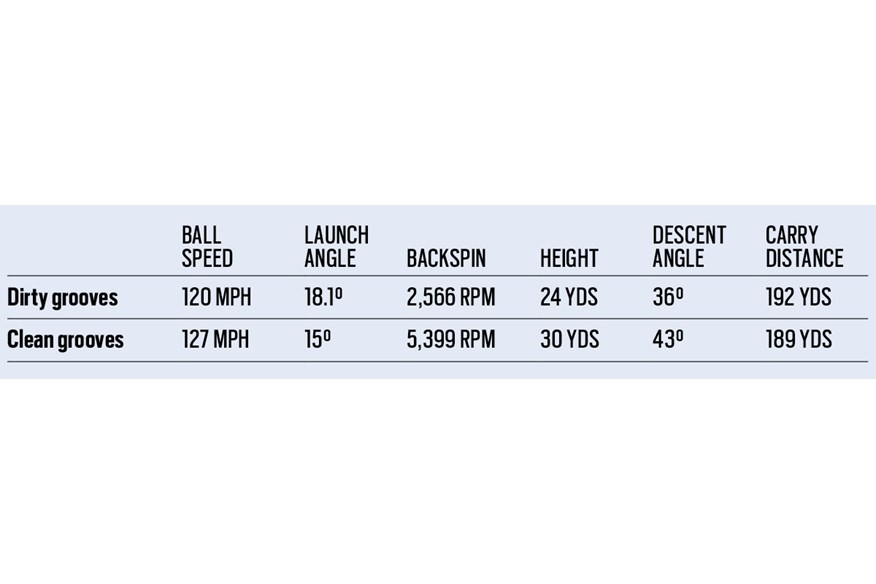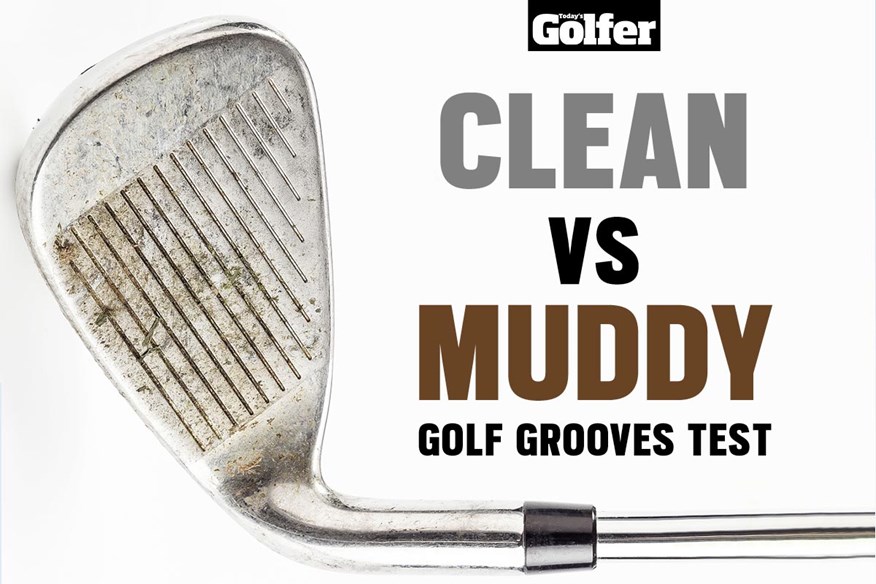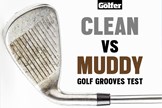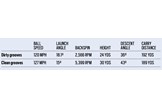TESTED: How dirt affects golf club grooves
Last updated:
We test dirty golf clubs against clean golf clubs to find out just how big an impact dirt and mud in your grooves can make to your performance on the golf course.
Tour pros have caddies who clean their clubs after every shot, ensuring no dirt or debris clogs the vital grooves.
Club golfers rarely clean their clubs on the course (unless it’s a particularly awful fat!). We play in muddier, wetter conditions, too, especially in winter, so keeping clubs clean is even more vital if we’re ever to maximise spin control (which dramatically affects distance) and consistency.
RELATED: Tested – How water affects golf ball performance
To see just how big an impact a failure to keep golf clubs clean has on performance, we decided to test spotlessly clean grooves against the kind of filthy grooves we’d expect to see in many amateur golfers bags during the winter.
Meet our Clean Golf Clubs vs Dirty Golf Grooves tester
Today’s Golfer Test Pro Neil Wain (below) is a highly-experience PGA Professional based at Keele Golf Centre in Staffordshire. For added consistency we work with Neil on all of our golf club and ball tests.
RELATED: Why you can you trust TG‘s club tests

Related: Revealed – Callaway Apex Irons and Hybrids for 2021!
How we performed our Clean vs Dirty Golf Grooves test
Neil hit shots on the Foresight GC Quad launch monitor with his own Ping i210 7-iron, cleaning and wiping the clubface between each shot, just as he’d do when playing.
We then smeared mud into the face grooves to replicate how an iron might look after a few holes in winter and had Neil hit further shots.
Our intention was to fill the grooves with mud without having any lumps sat on the face, as hopefully not too many golfers would attempt a shot with a club in this state. Even so, the difference in performance was staggering.
RELATED: Best Winter Golf Balls
WATCH: Clean vs Dirty Face Groove video
What our Clean vs Dirty Golf Grooves test revealed
If there was ever a reason to make sure you clean your clubs properly then this test is it.
Essentially, what we created by filling the face grooves was a slippery surface that didn’t interact with the ball in the way it is designed to.
Shots with dirty grooves lost 7mph of ball speed – 5.5% of our tester’s total – which is huge. Backspin (essentially control) fell a jaw-dropping 52.5% (to 2,566rpm from 5,399rpm), as did height (down six yards, or 20%) and descent angle (down 16.3%; 7°).
It goes without saying that thanks to the dirty club also cutting backspin so dramatically (it was half that of a clean 7-iron), shots flew further. Thanks though to the launch, height and descent angle being so poor, it was just three yards further, which would never warrant a worthwhile trade-off when so much control and consistency is at stake.
The takeaway here? Keep the clubface clean with a towel, and scrape the grooves clean with a tee before you use it.
RELATED: Tested – How the cold affects a golf ball’s performance
Clean vs Dirty Golf Grooves test: The statistics

READ NEXT: Tested – Which golf wedge works best in wet conditions



